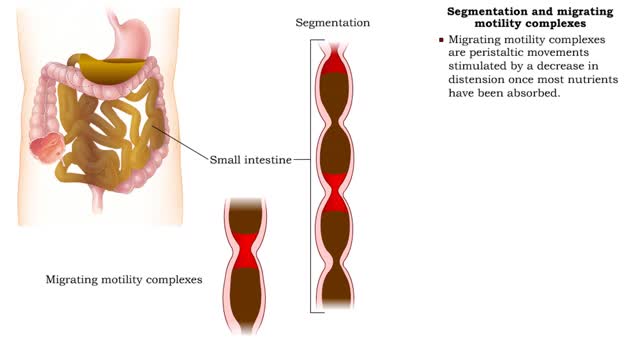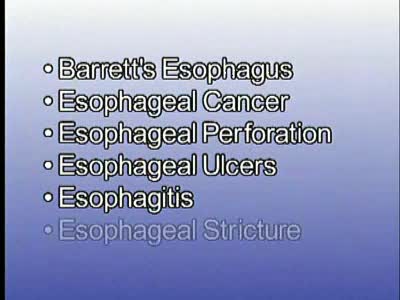Search Results
Results for: 'Stomach'
Stomach peristalsis & Enterogastric reflex
By: HWC, Views: 10656
• Food enters, distending the stomach. • Stretch receptors activate enteric reflexes that promote peristaltic movements. • These movements, called mixing waves, begin to mix the food with stomach secretions. • Mixing waves force the digesting food (chyme) toward and through the pylo...
Stomach peristalsis - Movement of Food Through the Small Intestine
By: HWC, Views: 11249
Peristalsis is a series of wave-like muscle contractions that moves food to different processing stations in the digestive tract. The process of peristalsis begins in the esophagus when a bolus of food is swallowed. The strong wave-like motions of the smooth muscle in the esophagus carry the food...
Protein digestion - stomach & small intestine
By: HWC, Views: 10737
• Protein digestion occurs in the stomach and small intestine. • The stomach enzyme pepsin initiates the process. • Pancreatic and intestinal brush border enzymes complete the digestive process. • In the stomach, pepsin is created from pepsinogen in the presence of pH-lowering hyd...
By: HWC, Views: 11367
The endocrine system maintains many body conditions within normal limits with feedback loops. Each endocrine feedback loop maintains homeostasis using the following components: • Stimulus - a change in a body condition. • Production cell - an endocrine cell that produces a hormone after b...
Digestive chemicals - water, gastric acid, bile & bicarbonate
By: HWC, Views: 10964
• Water is the most abundant molecule in ingested fluids. • Water plays a primary role in hydrolytic digestive reactions. • Helps liquefy and transport digestive foodstuffs down the tract. • Transports secretions from accessory digestive organs to gastrointestinal tract. • Aids ...
Segmentation and migrating motility complexes & Gastroileal reflex
By: HWC, Views: 11086
• Within a few hours, most of the stomach contents are in the duodenum. • Distension of stretch receptors in the small intestine activates a reflex that stimulates segmentation, a mixing movement. • During segmentation, sections of the intestine are constricted. • This movement incr...
Lipid digestion - mouth, stomach and small intestine
By: HWC, Views: 11347
• Lipid digestion takes place primarily in the small intestine; some occurs in the mouth and stomach. • Lipases are enzymes that break down triglycerides and phospholipids. • Lingual and gastric lipases hydrolyze a small amount of triglycerides. • End products are fatty acids and...
Carbohydrate digestion - mouth and stomach & pancreas and small intestine
By: HWC, Views: 11076
‚Ä¢ Digestion of complex carbohydrates (starches and glycogen) involves: ‚Ä¢ Amylases produced by the salivary glands and pancreas. ‚Ä¢ Brush-border enzymes in small intestine. ‚Ä¢ In the mouth, amylase from the parotid and submandibular salivary glands begins carbohydrate digestion. ‚Ä...
Gastroesophageal Reflux Disease (GERD)
By: Administrator, Views: 14194
Gastroesophageal reflux disease, or GERD, is a digestive disorder that affects the lower esophageal sphincter (LES), the ring of muscle between the esophagus and stomach. Many people, including pregnant women, suffer from heartburn or acid indigestion caused by GERD.
Advertisement











